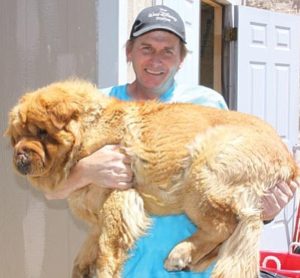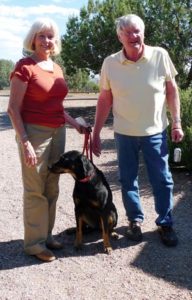The Yavapai Humane Society (YHS) is celebrating its 40th anniversary this year. I launched the year with a column explaining how wonderful it would be if YHS could celebrate this milestone year with a new X-ray machine.
Thanks to the generosity of several individuals and a significant gift from a foundation wishing to remain anonymous, YHS was able to purchase this life-saving equipment. I want to publicly thank all those who made this miracle a reality!
An X-ray machine significantly enhances YHS’s ability to diagnose and treat critical-needs animals more efficiently and humanely – resulting in more lives saved. The X-ray machine helps ensure every critically injured or severely ill animal YHS rescues has a fighting chance at a quality life.
Now that YHS has this wonderful tool, I am making a special plea for donations to our Special Treatment and Recovery (STAR) fund. Donations to the STAR program provide funds to care for the medical needs of animals that might be euthanized otherwise. The STAR fund is where we go when we need special medicines, X-rays, medical tests and reconstructive surgeries that our budget just can’t support.
Through the STAR program the entire community can participate in making sure injured and sick animals receive the care they need. Please consider making a contribution to this special program.
Speaking of our 40th anniversary celebration, be sure to save the date for this year’s Reigning Cats & Dogs Dinner and Auction Gala on Saturday evening, Sept. 8, at the Prescott Resort.
A special feature this year is the 40th anniversary essay contest called “40 Years of Saving Lives, 40 Years of Memories.”
You are invited to share your personal heart-warming animal story in the form of an essay (500 words or less), poem, song, video or photograph. Humorous or heart-tugging entries with a direct association with YHS are welcomed. Entries are limited to three. Entries will be submitted to the judges anonymously, making the contest open to all, including volunteers and former and current employees. There are no age limitations.
The grand prize is two tickets to the Reigning Cats & Dogs Gala where the winning entry will be recognized ($200 value).
The first runner-up will win a certificate for a free spay or neuter surgery for a family pet or a friend’s pet at the YHS Spay/Neuter and Wellness Clinic (up to $100 value). The second runner-up will win a $25 gift certificate to the YHS Thrift Shop. All winners and honorable mentions will be featured on the YHS website.
Entry deadline is Sunday, Aug. 12, 2012; winner notification is Friday, Aug. 17, 2012. Be sure to include your name, address, phone number and email address. By submitting your entry, you permit YHS to reproduce it on the YHS website and other media.






